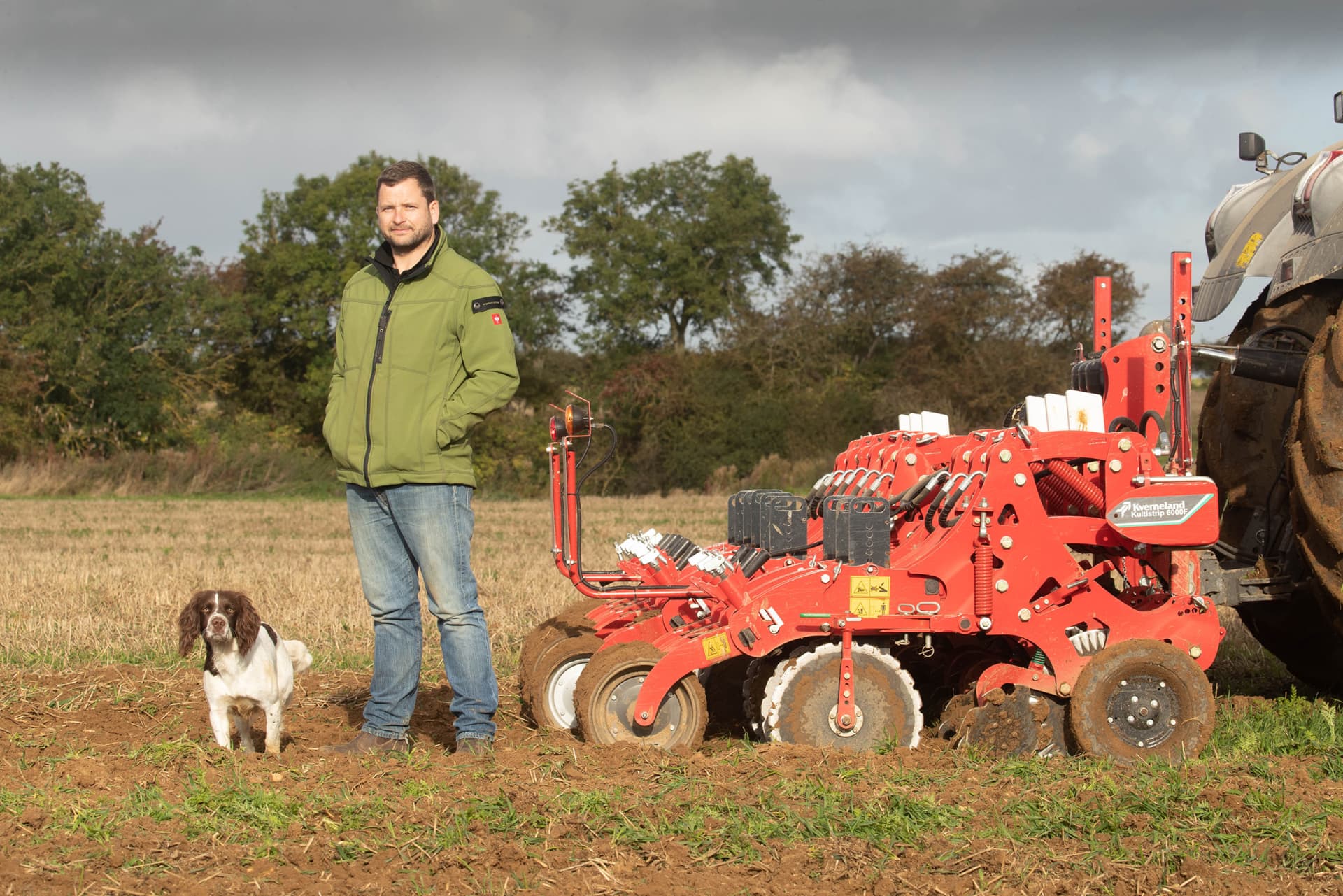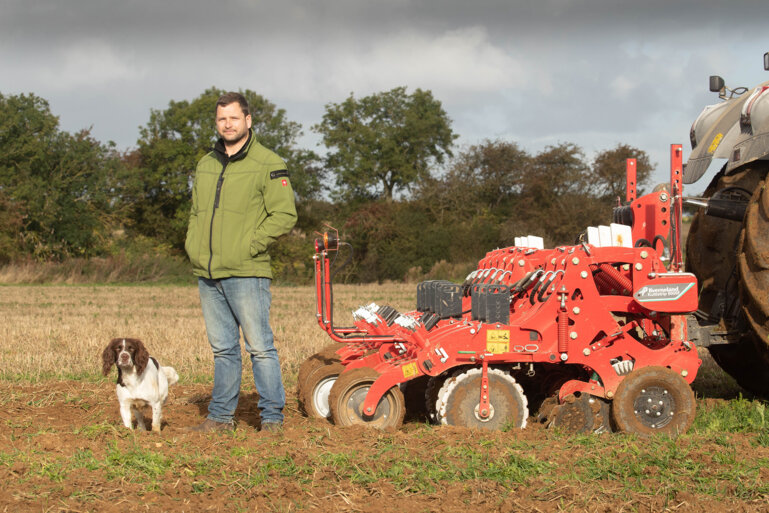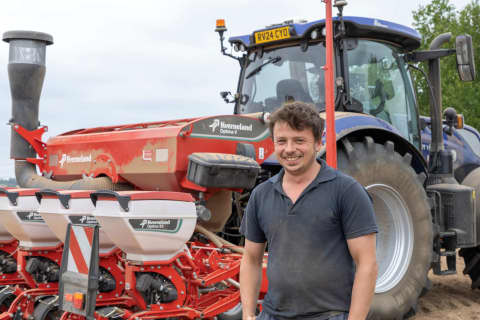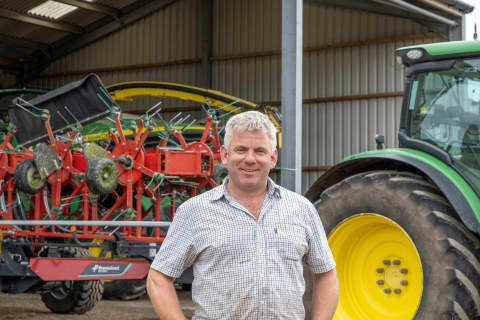“We’ve reduced our cultivation costs to £40-45/ha,”
After adopting a tined cultivator to prepare seedbeds ahead of sugar beet, partner Jack Robinson was keen to progress with strip-tillage. Having used a six-row demo machine from supplying dealer TNS for two seasons, he joined forces with Barsham Estates, working with farm manager Stuart Law, to then purchase a 12-row Kultistrip for spring 2021.
“In the first year, we trialled on a 36m tramline in one field, then the following year we trialled across 10ha,” explains Jack Robinson. “In spring 2021 we then used our 12-row version for the first time, growing 210ha of sugar beet between us, using strip tillage techniques.
”The Kultistrip works into cover crop residues and can prepare a seedbed for the farm’s 12-row Kverneland Monopill precision drill, in one pass on lighter soils. “We’ve reduced our cultivation costs to £40-45/ha,” he says. “There’s a significant time saving too, as the 6m Kultistrip will cover 40ha/day in some fields.
”Heavier soils get an autumn pass to create ‘winter strips’, with soil moved to full depth of 20-25cm, before freshening up in the spring. Once the soil has ‘hazed over’, the precision drill goes in. Mr Robinson likes the simplicity of the strip-till system, which uses finger wheels to move trash, ahead of a leading disc, tine and rear press wheels. “We currently place liquid DAP when drilling and slightly shallower than we would like, but the Kultistrip can also place fertiliser, which would allow us to put it under the seed. It’s not a huge job and it’s on the list to consider.”
He comments that the partnership’s 300hp tractor handles the Kultistrip comfortably. “We aim to work at 8-10kph – you don’t want to go too quickly and ‘boil’ the soil. Conditions also need to be right; it’s possible to really cover the ground with it, so we’ve learned to wait.” Results have been pleasing, he says. “It works really well – the Kultistrip takes the hassle out of preparing land for beet.
With unworked strips of ground between the rows, our fields also carry the harvester better.” “We’re moving the soil less and have been able to cut out one herbicide pass.
Working into cover crop residue does leave a scruffy seed bed, but it also binds the soil and we’re not seeing any wind erosion on lighter soils, which can cut young sugar beet off.” Moisture conservation is another benefit. “We’re drilling into moisture, and if the soils are loose we can put the seed in deeper, as it leaves a highly friable strip which is very easy to drill into.”
The partners are also considering other opportunities for the Kultistrip. “We’ve already hired it out to a local farm for maize, and it would be easy to put a seeder on the Kultistrip for oilseed rape establishment.”
Mr Robinson says that investing in sugar beet machinery was a big commitment. “Our confidence has grown and we are happy that we are establishing the crop cost-effectively. And sharing with another farm has made this an even better choice,” he says. “Not just financially – it’s an opportunity to share knowledge, which is not something that farmers are very good at.





